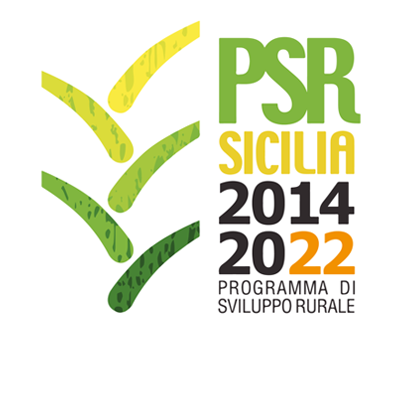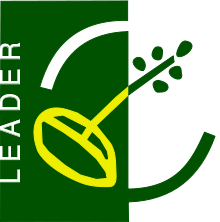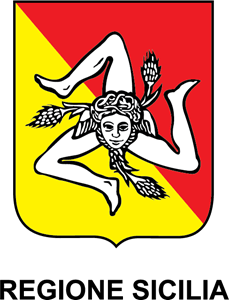Khangai
Country
Specie
ISO3
MNG
Language
mon.
Transboundary name
Khangai
Breed classification (adaptedness)
Native
Breed classification (geographic)
International
Adaptability to specific environment
The animals utilize the natural grassland better than other newly developed breeds in Mongolia.
Specific reproductive characteristic
Males and females are used for breeding for 6 to 7 years.
Special characteristic of product
The clean wool content is 10% (48-58%) higher than for other fine-wool breedswool quality.
Reference for special qualities
FAO Breed Survey W68-21
Color comments
uni coloured: white
Number of horns males
2
Number of horns females
0
Wither height males
78
Wither height females
69
Weight males
80.00
Weight females
58.00
Herdbook
n
Description of origin
composite of Mongolian, Altai, Goznen and Stavropol rams
Year of origin
1990
Location within country
Zagaan Nuur District of Selenga Province, western central Mongolia
Local cryo conservation status
No Material
Local Risk
Not at Risk
Detailed local risk status
Not at Risk
International Transboundary Risk detailed
Not at Risk
Kerei
Country
Specie
ISO3
MNG
Language
eng.
Breed classification (adaptedness)
Native
Breed classification (geographic)
Local
Adaptability to specific environment
The breed is well adapted to live in the harsh climate of the khangai range.
Specific resistance or tolerance
Mongol Altai range region and able to compensate losses in bodyweight for short summer period
Specific reproductive characteristic
Breeding males and females are kept for 5 to 7 years.
Color comments
Red brown and dark brown colors are dominant
Number of horns males
2
Number of horns females
0
Wither height males
73
Wither height females
62
Weight males
70.00
Weight females
56.00
Other specific visible traits
the population undergo to selective breeding supported by straight breeding of the desirable type which resulted in the creation of mutton-fat-coarse wool population latterly approved as “Kerei Breed”.
Herdbook
n
Description of origin
Fat-tailed sheep developed in 1999 through national researchers' efforts that aimed to develop breeds that are highly productive and adapted to the countrys natural conditions.
Location within country
West mongolia Bayan-Ulgii province
Local cryo conservation status
Not Sufficient
Local Risk
Not at Risk
Detailed local risk status
Not at Risk
Karakul
Country
Specie
ISO3
MNG
Transboundary name
Karakul
Other name
Astrakhan, Bukhara, Karakul'Skaya, Persian Lamb, Persian Lambrakhan, Karakul'
Breed classification (geographic)
International
Special characteristic of product
This breed has a medium-sized fat-tail, weighing from 2 to 3 kg.
Color comments
uni coloured: black, grey
Number of horns males
2
Number of horns females
0
Wither height males
75
Wither height females
60
Weight males
65.00
Weight females
46.00
Other specific visible traits
fat tail, tip of tail s-shaped
Domestication status
domestic
Taxonomic classification
Breed
Location within country
Sumbur district of east Gobi Province
Local cryo conservation status
No Information
Local Risk
Unknown
Detailed local risk status
Unknown
International Transboundary Risk detailed
Not at Risk
Kalkh Khoni
Country
Specie
ISO3
MNG
Language
mon.
Transboundary name
Mongolian
Other name
Mongolian, Mongolian Fat-Tailed
Breed classification (adaptedness)
Native
Breed classification (geographic)
International
Adaptability to specific environment
The animals are adapted to cold and dry climate, they survive temperature fluctuations from -50°C to +35°C. They are well adapted to all year round grazing and loose in winter-spring 20-25% of their autumn live weight.
Other special qualities
The animals are tolerant to roughage and high coarse-feed efficiency and fatten quickly.
Reference for special qualities
FAO Breed Survey
Color comments
uni coloured: white usually with black head
Number of horns males
0
Number of horns females
0
Wither height males
70
Wither height females
68
Weight males
55.00
Weight females
46.50
Other specific visible traits
fat tail
Herdbook
y
Herdbook established
1965
Description of origin
composite of Soviet Merino, Caucasian Merino (male) and Mongolian sheep (female)
Year of origin
1990
Import
none
Location within country
Bayantsagaan soum, Tuv aimag, Erdenedalai soum, Dundgobi aimag and Khotont soum, Arkhangai aimag and sold to more than 70 soums for pedigree uses as improvers.
Local cryo conservation status
Not Sufficient
Local Risk
Not at Risk
Detailed local risk status
Not at Risk
International Transboundary Risk detailed
Not at Risk
Jargalant
Country
Specie
ISO3
MNG
Language
eng.
Breed classification (adaptedness)
Native
Breed classification (geographic)
Local
Adaptability to specific environment
The animals are well adapted to the local harsh climate because they inherited the endurance and tolerance of local Mongolian sheep.
Color comments
uni coloured: white
Number of horns males
2
Number of horns females
0
Wither height males
68
Wither height females
64
Weight males
65.00
Weight females
51.00
Herdbook
n
Description of origin
New developed breed, from local sheep x Georgian Semi-Finewool
Year of origin
1989
Local cryo conservation status
No Material
Local Risk
At Risk
Detailed local risk status
Endangered
Gobi-Altai
Country
Specie
ISO3
MNG
Language
mong.
Other name
Gobi-Alltai Khoni
Breed classification (adaptedness)
Native
Breed classification (geographic)
Local
Adaptability to specific environment
The breed is adapted to the local environment (mountains, steppe and semi-desert areas).
Specific reproductive characteristic
Males and females are used for breeding for 6 to 7 years.
Special characteristic of product
Mutton quality is both good and juicy.
Reference for special qualities
W68-17 FAO Breed Survey
Color comments
uni coloured: white with brown or black head and black rings around eyes
Number of horns males
2
Number of horns females
0
Wither height males
74
Wither height females
69
Weight males
70.10
Weight females
57.50
Other specific visible traits
semi-coarse wool, fat tail
Herdbook
n
Description of origin
variety of Mongolian, recognised as a distinct breed in 1991
Year of origin
1991
Location within country
beyond Gobi, Altay Mountain Area
Local cryo conservation status
No Material
Local Risk
Not at Risk
Detailed local risk status
Not at Risk
Darkhat
Country
Specie
ISO3
MNG
Language
mong.
Breed classification (adaptedness)
Native
Breed classification (geographic)
Local
Adaptability to specific environment
The breed is adapted to high mountain areas.
Special characteristic of product
The breed produces a good mutton quality.
Reference for special qualities
FAO Breed Survey
Color comments
uni coloured: white with black or brown rings around the base of the eyes
Number of horns males
0
Number of horns females
0
Wither height males
70
Wither height females
62
Weight males
70.00
Weight females
50.00
Other specific visible traits
semi-coarsewoolled, fat tail
Herdbook
n
Taxonomic classification
Variety
Description of origin
variety of Mongolian
Year of origin
2015
Location within country
Hobsguul District
Local cryo conservation status
Not Sufficient
Local Risk
Not at Risk
Detailed local risk status
Not at Risk
Buryad
Country
Specie
ISO3
MNG
Language
Eng
Other name
Buryad strain
Breed classification (adaptedness)
Native
Breed classification (geographic)
Local
Wither height males
63
Wither height females
60
Weight males
70.00
Weight females
55.00
Herdbook
n
Description of origin
Public-selection assisted with periodic research and professional consultancy.
Year of origin
2015
Location within country
East place of Mongolia
Local cryo conservation status
No Material
Local Risk
Not at Risk
Detailed local risk status
Not at Risk
Bayangol
Country
Specie
ISO3
MNG
Language
eng.
Breed classification (adaptedness)
Native
Breed classification (geographic)
Local
Adaptability to specific environment
he breed is well adapted to live in the harsh climate of the steppe zone.
Specific resistance or tolerance
Breeding males and females are kept for 5 to 7 years.
Color comments
White color with various spots around eyes and on the face is dominant
Number of horns males
0
Number of horns females
0
Wither height males
73
Wither height females
62
Weight males
65.00
Weight females
52.00
Other specific visible traits
Capable to withstand risks under steppe ecological harsh conditions and put more weight over short period and well developed meat patterns.
Herdbook
n
Description of origin
Bayangol sheep through crossing local sheep with Uzemchin, Barga and Bayad breeds followed by straight breeding of the desirable type.
Year of origin
2015
Import
none
Location within country
Central of Mongolia Uvurkhangai province
Local cryo conservation status
No Material
Local Risk
Not at Risk
Detailed local risk status
Not at Risk
Bayad
Country
Specie
ISO3
MNG
Language
mong.
Other name
Bayad Khoni
Breed classification (adaptedness)
Native
Breed classification (geographic)
Local
Adaptability to specific environment
The breed is well adapted to the local environment (mountain region).
Special characteristic of product
Very good mutton quality is reported for this breed.
Color comments
uni coloured: white with black or brown head and black or brown rings around the base of the eyes
Number of horns males
0
Number of horns females
0
Wither height males
72
Wither height females
56
Weight males
68.40
Weight females
58.50
Other specific visible traits
fat tail (kg 2-4)
Herdbook
n
Description of origin
variety of Mongolian, developed by crossing local sheep with Khazakh Rump-Tailed
Year of origin
1991
Location within country
Malchin, Khirgas and east Gobi Districts Of Uvs Province
Local cryo conservation status
No Material
Local Risk
Not at Risk
Detailed local risk status
Not at Risk




